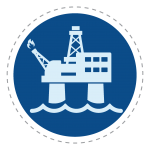- How Claims Work
- During Your Case
- Hiring an Attorney
- Attorneys
- About The Young Firm
- Helpful Info
- Resources
- Client Portal Hub
Get Answers. Move Forward.
504-680-4100

Were you injured in a platform accident? The Longshore Act limits your recovery from your company to only two things:
You cannot receive any damages for the physical pain and suffering and you will not receive the full amount of your lost wages under the Longshore Act.
But there are several other types of claims that you can receive your full damages under and you must be sure to consider these if you are an injured platform worker.
The Harbor Workers’ Compensation Act, officially known as the Longshore and Harbor Workers’ Compensation Act (LHWCA), is a federal law enacted in 1927 in the United States.
It provides compensation and medical care to employees who are injured or contract occupational diseases while working on navigable waters of the United States or in adjoining areas used in loading, unloading, repairing, or building a vessel. This includes workers in shipyards, marine terminals, and docks.
Key points about the LHWCA:
The LHWCA aims to provide a safety net for maritime workers, ensuring they receive proper care and compensation for injuries sustained during their employment.
You can file ‘third party’ claims against any company that did anything wrong that may have caused or contributed to your accident. I generally break these into two categories:

Let me give you some examples. There were probably lots of different companies working on your platform. If your platform accident was caused by something one of the employees for these companies did wrong, then you can file a claim against this company.
Remember, this is in addition to any Longshore claim you may have against your employer, and it does not reduce what you can collect from your employer.
These are examples of just some of the types of platform accident claims we have handled for our clients:
The second category of claims against third parties falls into what I call “design or maintenance claims.” The platform you worked on had lots of equipment on it. From the living quarters to the generators and piping, you had to rely on all this equipment to be properly designed and maintained.
Examples of these types of claims include: injury due to the poor design of the platform itself, injury due to a dangerous step on the outside of the living quarters, injury due to unsafe stairs and steps on the platform.
When you are injured as a maritime worker, you may have several avenues for seeking compensation. One important option is filing a 905(b) claim under the Longshore and Harbor Workers’ Compensation Act (LHWCA). This section explains the intricacies of 905(b) claims and how they can help you secure the compensation you deserve.
A 905(b) claim refers to a specific provision in the LHWCA that allows injured maritime workers to file a lawsuit against the owner of a vessel for negligence. This can include situations where the vessel owner is a third party or even your own employer if they own the vessel on which you were injured.
Under the Longshore Act, you generally receive compensation through your employer’s workers’ compensation insurance. However, if your injury occurred on a vessel owned by your employer, you can file a 905(b) claim against them for negligence. This is a significant provision because it allows you to pursue additional compensation beyond the standard workers’ compensation benefits.
If your injury was caused by the negligence of a third-party vessel owner, you can also file a 905(b) claim against them. This expands your options for seeking compensation and holding the responsible parties accountable.
While the Longshore Act provides essential benefits such as medical care and wage replacement, it does not always offer full compensation for all damages incurred from a workplace injury. This includes non-economic damages like pain and suffering. Therefore, pursuing a 905(b) claim can be crucial to ensuring you receive full compensation for your injuries.
Filing a 905(b) claim can significantly enhance your ability to receive full and fair compensation for injuries sustained while working in maritime environments. Understanding your rights and the legal avenues available can make a critical difference in your recovery and financial well-being.
By leveraging both the benefits provided by the Longshore Act and the additional compensation available through 905(b) claims, you can better protect your interests and achieve a more comprehensive recovery after an injury.
Call us so we can discuss any possible third party claims or 905b you may have to help you recover what you deserve.
400 Poydras St, Ste 2090
New Orleans, LA 70130
504-608-6308